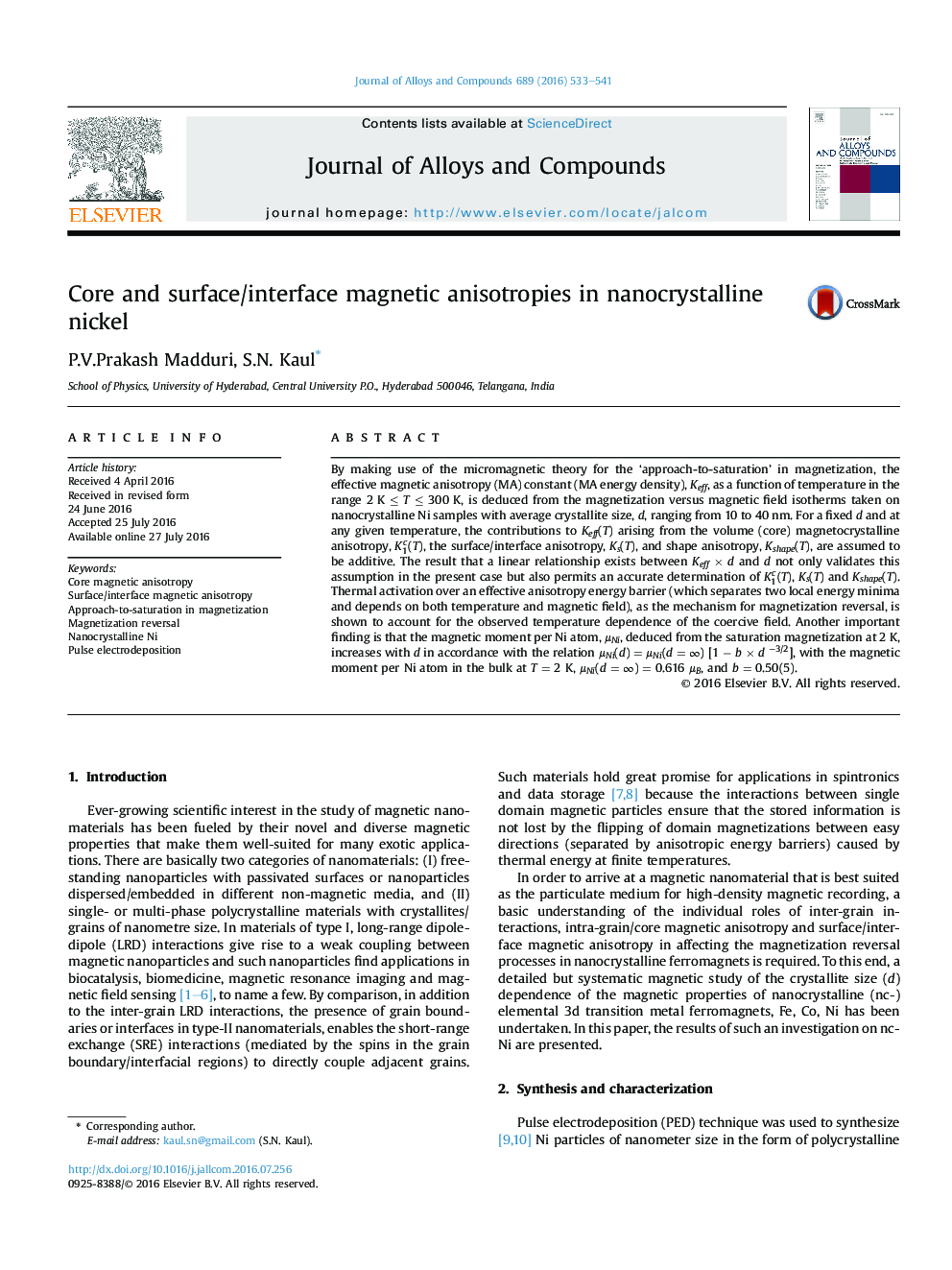| Article ID | Journal | Published Year | Pages | File Type |
|---|---|---|---|---|
| 1605169 | Journal of Alloys and Compounds | 2016 | 9 Pages |
Abstract
By making use of the micromagnetic theory for the 'approach-to-saturation' in magnetization, the effective magnetic anisotropy (MA) constant (MA energy density), Keff, as a function of temperature in the range 2 K ⤠T â¤Â 300 K, is deduced from the magnetization versus magnetic field isotherms taken on nanocrystalline Ni samples with average crystallite size, d, ranging from 10 to 40 nm. For a fixed d and at any given temperature, the contributions to Keff(T) arising from the volume (core) magnetocrystalline anisotropy, K1c(T), the surface/interface anisotropy, Ks(T), and shape anisotropy, Kshape(T), are assumed to be additive. The result that a linear relationship exists between Keff Ã d and d not only validates this assumption in the present case but also permits an accurate determination of K1c(T), Ks(T) and Kshape(T). Thermal activation over an effective anisotropy energy barrier (which separates two local energy minima and depends on both temperature and magnetic field), as the mechanism for magnetization reversal, is shown to account for the observed temperature dependence of the coercive field. Another important finding is that the magnetic moment per Ni atom, μNi, deduced from the saturation magnetization at 2 K, increases with d in accordance with the relation μNi(d) = μNi(d = â) [1 â b Ã d â3/2], with the magnetic moment per Ni atom in the bulk at T = 2 K, μNi(d = â) = 0.616 μB, and b = 0.50(5).
Related Topics
Physical Sciences and Engineering
Materials Science
Metals and Alloys
Authors
P.V.Prakash Madduri, S.N. Kaul,
